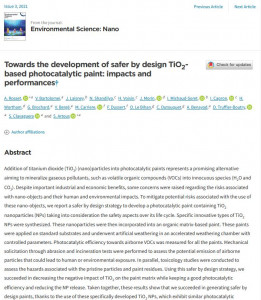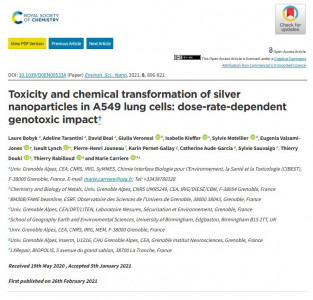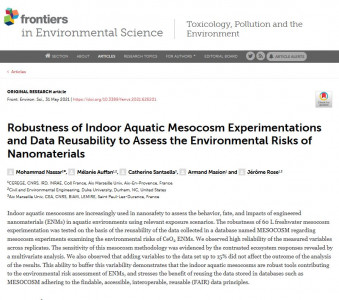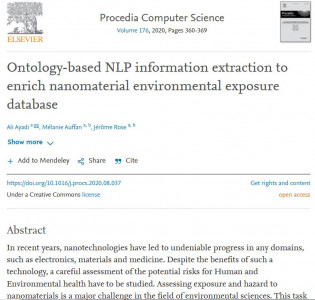NEw article on "Insights into polythiol-assisted AgNP dissolution induced by bio- relevant molecules" by Marchioni, M., Gallon, T., Worms, I., Jouneau, P-H., Lebrun, C., Veronesi, G., Truffier-Boutry, D., Mintz, E., Delangle, P., Deniaud, A., Michaud-Soret, I. 2018.
Abstract
The widespread use of silver nanoparticles (AgNPs) as biocides in consumer products raises concerns about their toxicity to humans and their environmental impact. The biocidal activity is mediated by the re- lease of AgIJI). However, this metal ion is universally toxic to living organisms. For instance, AgIJI) tightly binds to thiol functional groups that are abundant and essential to any cell type. The first intracellular source of thiol, glutathione, is crucial for the control of the redox balance of cells. Dissolution studies using monothiol-containing biomolecules such as glutathione or cysteine provided controversial results, while the impact of polythiol molecules on AgNP behavior remains unexplored. In order to gain insights into polythiol-assisted AgNP dissolution at constant and equal thiol : Ag molarity, we studied the impact of glu- tathione, phytochelatins with 2, 3 or 6 thiols, and copper chaperone Atx1 and its metal binding site mimic P2, both containing 2 pre-oriented thiols to chelate CuIJI). The AgNP behavior was monitored by various complementary physicochemical approaches. We demonstrated unambiguously that, under aerobic condi- tions, these molecules favor AgNP dissolution into AgIJI) ions with a rate that increases with the number of thiols per molecule as well as with their pre-orientation. We also observed that AgNP dissolution into AgIJI) soluble species occurs progressively for the whole AgNP population. This work highlights how transforma- tions of AgNPs are triggered by biomolecules and lays the basis for a deeper understanding of their fate in biological/environmental systems.
https://doi.org/10.1039/c8en00340h









